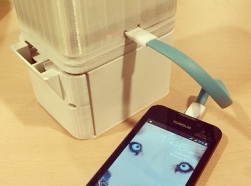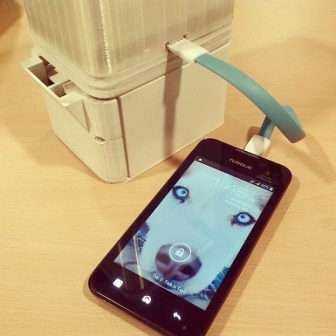Categories: Featured Articles » Interesting electrical news
Number of views: 10466
Comments on the article: 3
LED salt water based seawater
 A group of volunteers from Greenpeace, who arrived in 2011 on the Philippine island of Luzon, settled in a tribe of local residents who, as it turned out, used only paraffin candles and kerosene lamps to illuminate after dark. The inhabitants of the village did not use electricity at all, and the guests of the island had nowhere to charge their numerous digital equipment.
A group of volunteers from Greenpeace, who arrived in 2011 on the Philippine island of Luzon, settled in a tribe of local residents who, as it turned out, used only paraffin candles and kerosene lamps to illuminate after dark. The inhabitants of the village did not use electricity at all, and the guests of the island had nowhere to charge their numerous digital equipment.
Some of the Filipinos, who had a kerosene lamp in the household, traveled 50 kilometers to a neighboring village to get kerosene for their lamps there, but civilized Americans were in a real technological shock from all this, their thoughts were busy finding a solution - how to charge their gadgets, given the complete absence of even power lines within the Central Cordillera region, where they settled.
Fortunately, there was an abundance of seawater on the island, which, as you know, can serve as an electrolyte solution, and if electrodes made of metals forming a galvanic pair are placed in such a solution, then you get a real electric battery.

Aisa Mizheno, an engineer at Greenpeace Group, a professor at De La Salle University, came up with an LED flashlight based on saltwater, and she was able to not only get light and charge a smartphone, but also give electric light to the inhabitants of the island, because it is much safer and more convenient than burning many liters of kerosene. Of course, this is far from modern lithium batterybut electricity appeared in a mountainous area.

Four years later, the SALt (Sustainable Alternative Lighting) project found investors, and the first batch of 600 seawater-based LED lights is already being prepared for shipment to the island for free. Such lamps can give light to the inhabitants of the island in the dark during the day continuously for 8 hours, and the service life of the electrodes is half a year.
The team does not disclose the complete diagram of their salt luminaires, however, they have already presented at least two models of luminaires combined with current sources to the general public. One of the models is just an LED flashlight, and the second has the additional ability to charge electronic devices from its salt battery.

If you don’t even have access to seawater, you can fill the battery with ordinary water by dissolving two teaspoons of ordinary salt in it in a proportion of two teaspoons of salt per glass of water. SALt manufacturers calculated that after six months of using the battery, you just need to replace its anode, and the salt LED lamp will again be ready to serve its owners for the next 6 months.

The device is no larger than a kerosene lamp in size, in the lower part there is a compartment serving as a current source filled with salt water, and in the upper part there are electrode pairs, simple electronics and LEDs.
If kerosene continued to remain a source of light, as before, it would take about 28 liters for half a year, and it would also be necessary to burn several meters of the wick. Now, one problem remains - the maintenance of LED sources far from civilization.
See also at bgv.electricianexp.com
:
